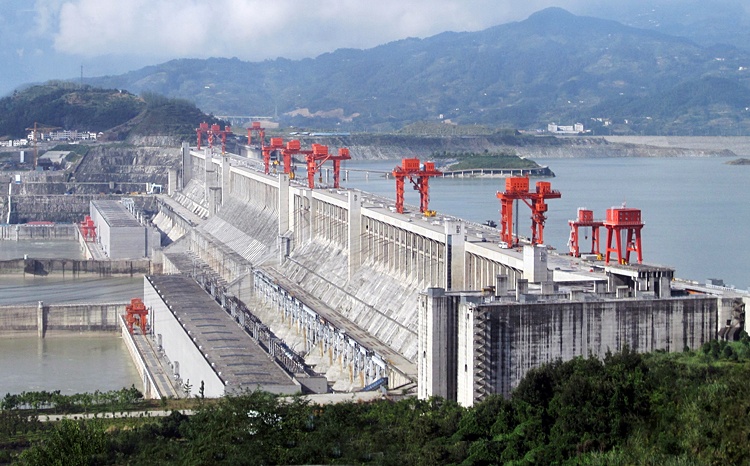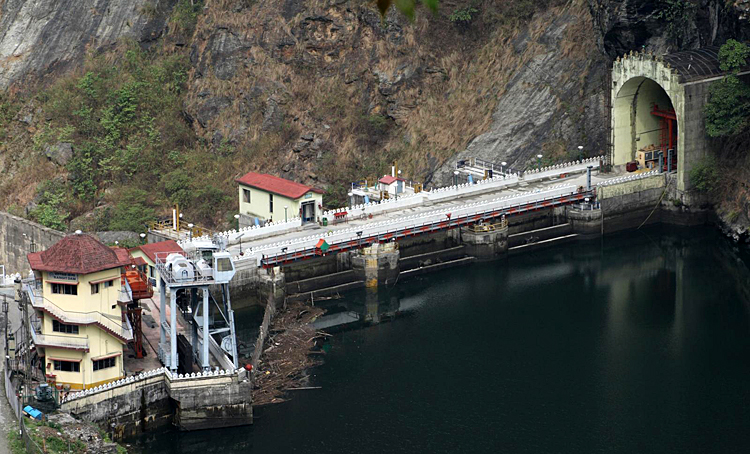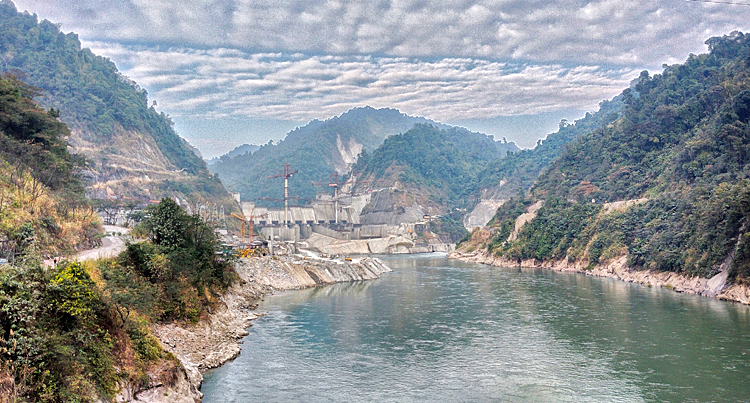INDIAN ARMED FORCES CHIEFS ON OUR RELENTLESS AND FOCUSED PUBLISHING EFFORTS

The insightful articles, inspiring narrations and analytical perspectives presented by the Editorial Team, establish an alluring connect with the reader. My compliments and best wishes to SP Guide Publications.

"Over the past 60 years, the growth of SP Guide Publications has mirrored the rising stature of Indian Navy. Its well-researched and informative magazines on Defence and Aerospace sector have served to shape an educated opinion of our military personnel, policy makers and the public alike. I wish SP's Publication team continued success, fair winds and following seas in all future endeavour!"

Since, its inception in 1964, SP Guide Publications has consistently demonstrated commitment to high-quality journalism in the aerospace and defence sectors, earning a well-deserved reputation as Asia's largest media house in this domain. I wish SP Guide Publications continued success in its pursuit of excellence.
- Operation Sindoor: Resolute yet Restrained
- India’s Operation Sindoor Sends a Clear Message to Terror and the World – ‘ZERO TOLERANCE’
- Japan and India set forth a defence cooperation consultancy framework, talks on tank and jet engines
- Terrorist Attack in Pahalgam in Kashmir: Unfolding a long surgical war against PAK
- Lt General Pratik Sharma takes over Command of Indian Army's Northern Command
China's Mega Dams
China's ambitious plan to construct the world's largest hydropower dam on the Brahmaputra River marks a significant and crucial turning point in South Asia's geopolitical landscape; it heralds a profound shift in regional power dynamics, particularly in the realm of transboundary water politics
 |
The Author is Former Director General of Information Systems and A Special Forces Veteran, Indian Army |

According to news reports of May 30, 2025, NASA has confirmed that China's massive infrastructural projects, including the colossal Three Gorges Dam, are altering Earth's rotation, highlighting the profound and unexpected impact of human ingenuity on Earth's delicate balance. Situated in Hubei Province, the Three Gorges Dam, a hydroelectric project, took nearly 18 years to complete, from 1994 to its final phase in 2012. According to the National Centre for Space Studies (CNES), the dam aims to balance territorial dynamics by emphasising the interior over the coastal regions; to integrate less developed areas into the national economy.
NASA has confirmed that China's massive infrastructural projects, including the colossal Three Gorges Dam, are altering Earth's rotation
In an article published in 2005, Benjamin Fong Chao of NASA's Goddard Space Flight Centre pointed out that all mass movements, from seasonal weather patterns to driving a car, have an effect; global events involving mass movement, such as the 2004 earthquake and tsunami, can influence Earth's rotation. The 2004 earthquake altered Earth's seismic structure, shortening the day by 2.68 microseconds. Now it is opined that if the Three Gorges Dam's reservoir were filled to capacity, it would hold 10 trillion gallons of water, and this mass redistribution could increase the length of a day by 0.06 microseconds, making Earth slightly more oblate.

No doubt the Three Gorges Dam in China is the largest hydroelectric dam, impacting both energy production and global dynamics, and human-made structures can cause minute changes in Earth's rotation, compounded by climate change. NASA's focus is on China, being America's number one enemy. But infrastructure development at varied scales is happening throughout the world, together with massive deforestation activities. The noise over climate change and the money being spent on it is partially, if not mostly, a farce? It may be recalled that in his first presidency, Donald Trump had trashed climate change, calling it a bogey, and pulled out of the Paris Accord. In his second presidency, Trump has also dumped his predecessor plan to switch to electric vehicles. Then are the massive emissions of the developed world, including through the expanding industrialisation? To top this all is the war mongering by the US-led West with thousands of tonnes of ordnance being fired daily to pollute the environment, with no accountability whatsoever. Hence, rather than focusing on China, NASA would do well to undertake a global-level study and work out a global graph which country is affecting Earth's rotation in what measure, and who is damaging the climate at what level.
If the Three Gorges Dam's reservoir were filled to capacity, it would hold 10 trillion gallons of water, and this mass redistribution could increase the length of a day by 0.06 microseconds, making Earth slightly more oblate
The Brahmaputra River, called Yarlung Tsangpo in Tibet, originates near Mount Kailash and traverses China, India and Bangladesh before merging with the Ganges in the Bay of Bengal. The river's unique topography, particularly at the "Great Bend" in Tibet, offers immense potential for hydropower generation. China's ambitious plan to construct the world's largest hydropower dam on the Brahmaputra River marks a significant and crucial turning point in South Asia's geopolitical landscape; it heralds a profound shift in regional power dynamics, particularly in the realm of transboundary water politics. India's response to the Chinese announcement was that it would "protect its interests." But considering that this project would generate 60 gigawatts electricity (three times the capacity of Three Gorges Dam), the strategic implications of controlling the Brahmaputra's upper reaches cannot be overlooked; lower-riparian flow, proximity of the dam to India's northeast fraught with territorial disputes, and China emerging as Pakistan's strategic ally in the water politics of South Asia.

India has Ranganadi and Rangit dams in the northeast (while the Subansiri Lower Dam and Dibang Dam are halted) with plans to construct another hydropower infrastructure on the Brahmaputra. The proposed Siang Dam in Arunachal Pradesh is intended to counterbalance China's influence and ensure India's water security. However, given the region's geological sensitivity, executing such a project presents significant technical and environmental challenges.
Considering that the world's largest hydropower dam on the Brahmaputra River would generate 60 gigawatts electricity (three times the capacity of Three Gorges Dam), the strategic implications of controlling the Brahmaputra's upper reaches cannot be overlooked
The Brahmaputra is a crucial lifeline for India's northeastern states, supporting agriculture, drinking water supplies and hydropower generation. Alteration to its natural flow could disrupt these essential functions, posing severe risks to millions of Indian people who depend on the river. Reduced water flow and sediment deposits could negatively impact agriculture, fisheries and local ecosystems, exacerbating socio-economic vulnerabilities in the region. The Himalayas are one of the most seismically active regions in the world, making large-scale infrastructure projects highly risky. A potential dam failure or mismanagement during extreme weather events could lead to catastrophic flooding in downstream areas, posing serious humanitarian and economic consequences for India. China has no water sharing agreement with any country and its water data sharing agreement with India has also lapsed. Hence, Beijing is free to act in any manner it wants, which raises the threat level given China's unpredictability.
The Brahmaputra is a crucial lifeline for India's northeastern states, supporting agriculture, drinking water supplies and hydropower generation
In an interview with Indian media last month, Victor Zhikai Gao, Vice President of the Beijing-based Centre for China and Globalization, issued a pointed warning to India: "Don't do onto others what you don't want done to you." He was referring to India putting on hold the Indus Water Treaty (IWT) with Pakistan. Gao's repeated the caution thrice when asked if China might weaponise the Brahmaputra's waters in support of its "all-weather friend" Pakistan. He underscored India's vulnerability as a midstream nation, suggesting it "may face difficulties" should similar retaliatory measures occur.
China has no water sharing agreement with any country and its water data sharing agreement with India has also lapsed
In an interesting development, China plans to build a dam using artificial intelligence (AI) and 3D printing "without" the use of humans. According to news reports of May 10, 2025, Chinese scientists have already 3D printed a 590-foot-tall dam in 2024 using AI and robots. The Yangqu Hydropower Dam in the Tibetan plateau is set to be assembled layer by layer with 3D printing in a two-year timeframe using AI, construction robots, and zero human labour eliminating human error and safety concerns for workers. At Yangqu, a central AI system will be used to oversee a massive automated assembly line that starts with a fleet of unmanned trucks used to transport construction materials to parts of the worksite. The completed 590-feet high Yangqu Dam will provide five billion kilowatt-hours of power every year to China.





